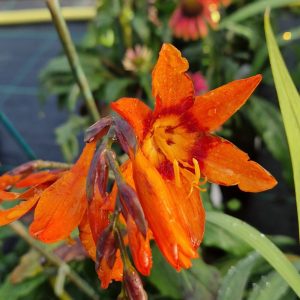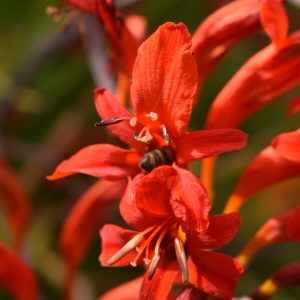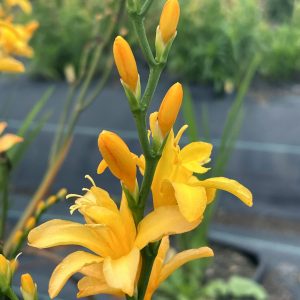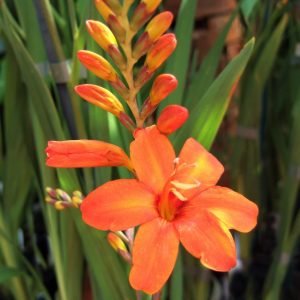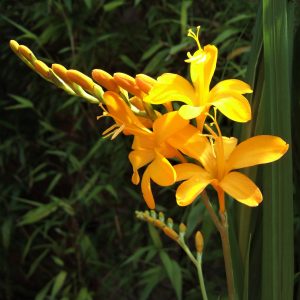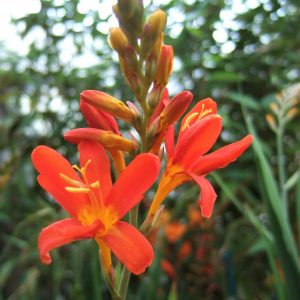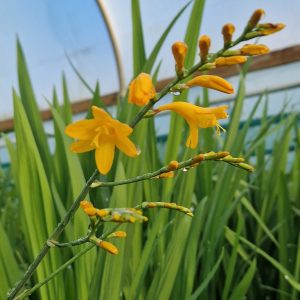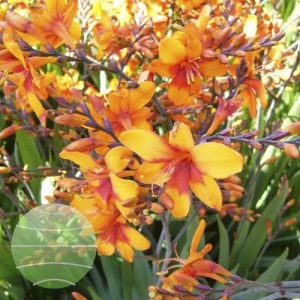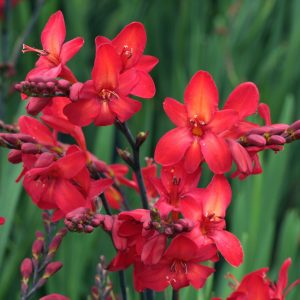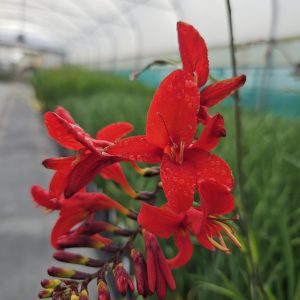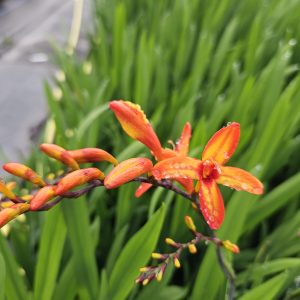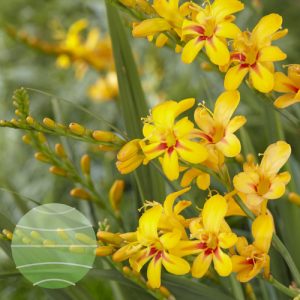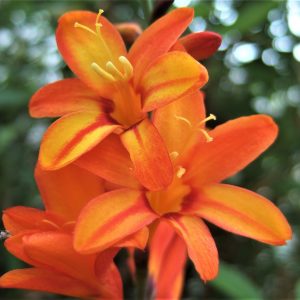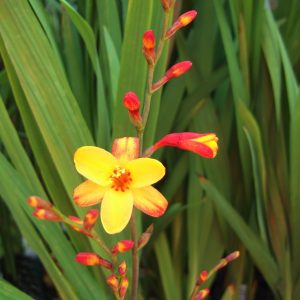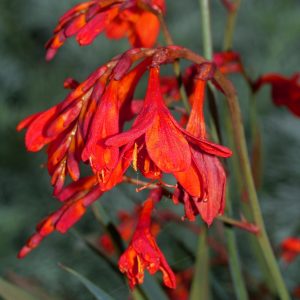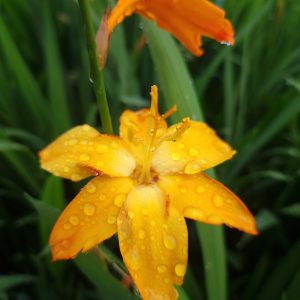Crocosmia, also known as montbretia, is a stunning and vibrant perennial that adds a touch of elegance to gardens. Follow this comprehensive planting guide to ensure the successful cultivation of your Crocosmia plants:
Site Selection
Sunlight Requirements: Plant Crocosmia in a location that receives full sun to partial shade. While they tolerate some shade, they bloom best in full sunlight.
Soil Conditions: Choose well-draining soil with a slightly acidic to neutral pH. Crocosmia is adaptable to various soil types but prefers fertile and loamy soil.
Planting Time
Optimal Timing: Plant Crocosmia corms in the spring after the last frost. This allows them to establish before the growing season.
Planting Process
Prepare the Soil: Work the soil to a depth of 6-8 inches, incorporating organic matter like compost for improved fertility.
Spacing: Plant corms 4-6 inches apart and 2-4 inches deep. Space multiple corms about 12-18 inches apart to allow for proper growth and airflow.
Watering
Establishment Period: Water regularly during the first growing season to help corms establish strong root systems.
Drought Tolerance: Once established, Crocosmia is somewhat drought-tolerant. Water during dry periods, especially in the absence of rainfall.
Mulching
Organic Mulch: Apply a 2-3 inch layer of organic mulch around the plants. Mulch helps conserve soil moisture, suppress weeds, and insulate the soil.
Fertilisation
Balanced Fertiliser: Apply a balanced, slow-release fertiliser in spring to encourage robust growth and prolific flowering.
Support
Staking: Crocosmia may benefit from staking, especially if planted in a location exposed to strong winds. Provide support as needed to prevent bending.
Pruning
Deadheading: Remove spent flowers regularly to encourage continuous blooming. Trim back the entire plant after flowering to maintain a neat appearance.
Pest and Disease Management
Aphid Control: Keep an eye out for aphids, particularly on new growth. Use insecticidal soap or a strong stream of water to control infestations.
Good Air Circulation: Ensure proper spacing between plants to promote good air circulation and reduce the risk of fungal diseases.
Winter Care
Mulching: Mulch lightly around the plants in late Autumn to protect them during winter. This is especially important in colder climates.
Division
Periodic Division: Every 2-3 years, consider dividing crowded Crocosmia clumps to rejuvenate the plants. This is best done in early spring.
Adaptation
Monitor and Adjust: Regularly monitor the overall health of your Crocosmia. Adjust care practices based on specific growing conditions and be prepared to address any adverse effects.



